Lonely Robot Theme is going paid, yay me! Nothing is going behind a paywall at the moment, but if would like to support me you can become a paying subscriber here. Many thanks, LRT.
Gwen John, a Welsh artist born in 1876, was a prominent figure in the early 20th-century art scene. Her work is known for its unique portrayal of solitude and introspection, reflecting a deep sense of loneliness that permeated her life and artistic expression.
Throughout her career, Gwen John developed a distinctive style that primarily focused on intimate portraits and still-life paintings. Her subjects often included young women, nuns, and domestic settings, but what truly set her work apart was the emotional depth and sense of isolation she infused into each piece.
Loneliness was a recurring theme in Gwen John's art, stemming from her own personal experiences. Her early life was marked by a somewhat solitary existence, and she faced numerous struggles, including a complex relationship with her family and unfulfilling romantic affairs. This emotional turmoil became a driving force behind her artistry, allowing her to channel her feelings into her creations.
In her portraits, Gwen John skillfully captured the inner world of her subjects, often presenting them in quiet contemplation, with a hint of melancholy in their gaze. The use of subdued colors and soft brush strokes added to the overall sense of solitude, creating an atmosphere of calm introspection. Her figures seemed to withdraw from the viewer, inviting interpretation and reflection on their emotions and state of mind.
One of her most famous works, "The Convalescent," exemplifies her focus on isolation. The painting features a solitary woman lying on a bed, seemingly lost in her thoughts. The emphasis on her isolation and vulnerability tugs at the viewer's heartstrings, evoking empathy and understanding of the human condition.
Gwen John's artistic exploration of loneliness wasn't just limited to her portrayal of individuals. Her still-life compositions often incorporated empty chairs or solitary objects, symbolizing the absence of human presence and reinforcing the theme of isolation.
While her paintings radiate a sense of solitude and longing, they also offer a glimpse into Gwen John's profound ability to find beauty and meaning in moments of seclusion. Rather than merely dwelling on the negative aspects of loneliness, she turned it into a source of creative inspiration, enabling her to connect with her audience on a deeply emotional level.
Gwen John's work is a poignant portrayal of loneliness, stemming from her personal struggles and experiences. Her ability to convey deep emotions through her art allows viewers to connect with the universal human experience of solitude and introspection. Despite the somber undertones, her paintings also radiate a sense of beauty and resilience, making Gwen John's work a timeless testament to the power of art in expressing complex emotions and the human spirit.
Gwen John (1876-1939) was a Welsh artist who gained prominence in the early 20th century for her unique and introspective paintings. She was born on June 22, 1876, in Haverfordwest, Wales. Gwen was the younger sister of the renowned painter Augustus John, whose artistic pursuits greatly influenced her own.
In pursuit of her passion for art, Gwen John attended the Slade School of Fine Art in London in 1895. There, she honed her skills and developed her distinctive style, focusing on portraiture and still-life compositions. Her talent and dedication earned her the admiration of her peers and instructors, and she soon began exhibiting her work at prestigious galleries.
In 1904, Gwen John moved to Paris, a city that would play a significant role in her artistic journey. There, she became associated with the Parisian avant-garde and the circle of artists known as the École de Paris. It was during her time in the French capital that she developed her signature use of subdued colors and delicate brushwork, often depicting women and nuns in serene and introspective settings.
While in Paris, Gwen John became involved in a romantic relationship with the sculptor Auguste Rodin. Their tumultuous affair deeply impacted her emotional life and influenced her art, leading to many poignant and solitary portrayals of women. Despite the passionate nature of their relationship, it did not endure, and Gwen John struggled with feelings of loneliness and unrequited love.
Throughout her career, Gwen John exhibited her work in London and Paris, receiving critical acclaim for her artistic achievements. However, she led a somewhat reclusive and nomadic lifestyle, moving frequently and often living in seclusion. Her introverted nature and personal challenges contributed to the melancholic and contemplative themes present in her art.
Despite facing financial difficulties and personal struggles, Gwen John remained committed to her craft. Her paintings continued to evolve, capturing the emotional depth and vulnerability of her subjects, whether in portraits or still-life compositions. Her ability to evoke a profound sense of introspection and solitude in her art set her apart as a distinctive and influential artist of her time.
Gwen John's life and career came to an end on September 18, 1939, in Dieppe, France. Her legacy, however, lives on through her emotionally charged and evocative paintings, which continue to be admired and celebrated by art enthusiasts and critics alike. Her unique ability to convey deep emotions and the human experience of loneliness has solidified her position as one of the notable female artists of the early 20th century.
A Triptych of Solitude: A Review of Three Paintings by Gwen John
Gwen John, a master of introspective art, delicately weaves emotions and solitude into her paintings, inviting viewers into a world of quiet contemplation and vulnerability. In this review, we explore three of her notable works, each representing a unique facet of her artistic brilliance.
"The Convalescent" (c. 1923)
"The Convalescent" is a poignant portrayal of human vulnerability and solitude. The central figure, a young woman resting on a bed, exudes an aura of delicate frailty. Her eyes, fixed on a distant point, seem to hint at a profound inner world, leaving viewers with a sense of empathetic connection. Gwen John's expert use of subdued colors and soft brush strokes evokes a serene atmosphere, almost as if time has momentarily halted to allow us to share in the subject's contemplative state. "The Convalescent" is a haunting reminder of the transient nature of life and the enduring power of artistic expression.
Young Woman Holding a Black Cat" (c. 1905-1910)
Gwen John's "Young Woman Holding a Black Cat" is a captivating exploration of the relationship between humans and animals. The painting features a young woman cradling a black cat in her arms, their gazes meeting in mutual understanding. The artist's skillful use of light and shadow creates an aura of mystery, drawing attention to the woman's contemplative expression and the enigmatic presence of the cat. Through this piece, Gwen John delves into the complexities of human-animal connections, leaving us pondering the profound bond between two different worlds that find solace in each other's company.
"A Corner of the Artist's Room in Paris" (c. 1907-1909)
"A Corner of the Artist's Room in Paris" showcases Gwen John's talent for infusing even the most mundane settings with emotional resonance. The painting presents a small corner of her Parisian room, where a table, chair, and a few personal belongings create a sanctuary of solitude. The artist's keen eye for detail and her skillful use of light bring life to the everyday objects, evoking a sense of quiet contemplation and artistic inspiration. The painting's simplicity and poetic atmosphere invite viewers to imagine the countless hours Gwen John spent in this private haven, exploring her innermost thoughts and creativity.
In conclusion, Gwen John's trio of paintings showcases her exceptional ability to delve into the human psyche and capture the essence of loneliness, vulnerability, and spiritual contemplation. Each artwork offers a unique perspective on the human experience, inviting viewers to engage in moments of quiet introspection and empathetic connection. Gwen John's art endures as a testament to the power of painting to convey profound emotions and touch the hearts of all who encounter it.
Gwen John - a poem by Lonely Robot Theme.
Gwen John, the painter of solitude's grace,
In hues of introspection, you find your place,
Your canvas, a mirror of hearts that ponder,
A world of emotions, you gently conjure.
Born 'neath Welsh skies, your journey began,
In the footsteps of art, a steadfast plan,
A sister's shadow, yet a spirit free,
You'd forge a path to your destiny.
In London's halls, Slade's teachings took flight,
With brush and palette, you embraced the light,
A portrait of self, a soulful gaze,
In those youthful strokes, the promise ablaze.
Paris, the City of Love and of Art,
It's there your muse, a sculptor's heart,
Rodin's embrace, an affair profound,
Yet solitude's echo would still resound.
In quiet corners, in studios dim,
Your subjects waited, their hearts to brim,
Nuns at prayer, in still devotion,
Their souls adorned in muted emotion.
"The Convalescent," in repose so deep,
A glimpse into dreams, her secrets keep,
And "The Little Schoolgirl," innocent and fair,
In her eyes, a world of wonder to bear.
Through soft brushstrokes, your essence unfurled,
In colors subdued, a precious world,
The language of silence, you eloquently spoke,
To those who listened, your art evoked.
A life of yearning, of struggles untold,
Yet your art a sanctuary to behold,
Within each frame, a piece of your soul,
A timeless legacy, forever whole.
Gwen John, your canvas now divine,
A tapestry of emotions that intertwine,
In the gallery of hearts, you'll forever dwell,
A painter of loneliness, you've cast your spell.


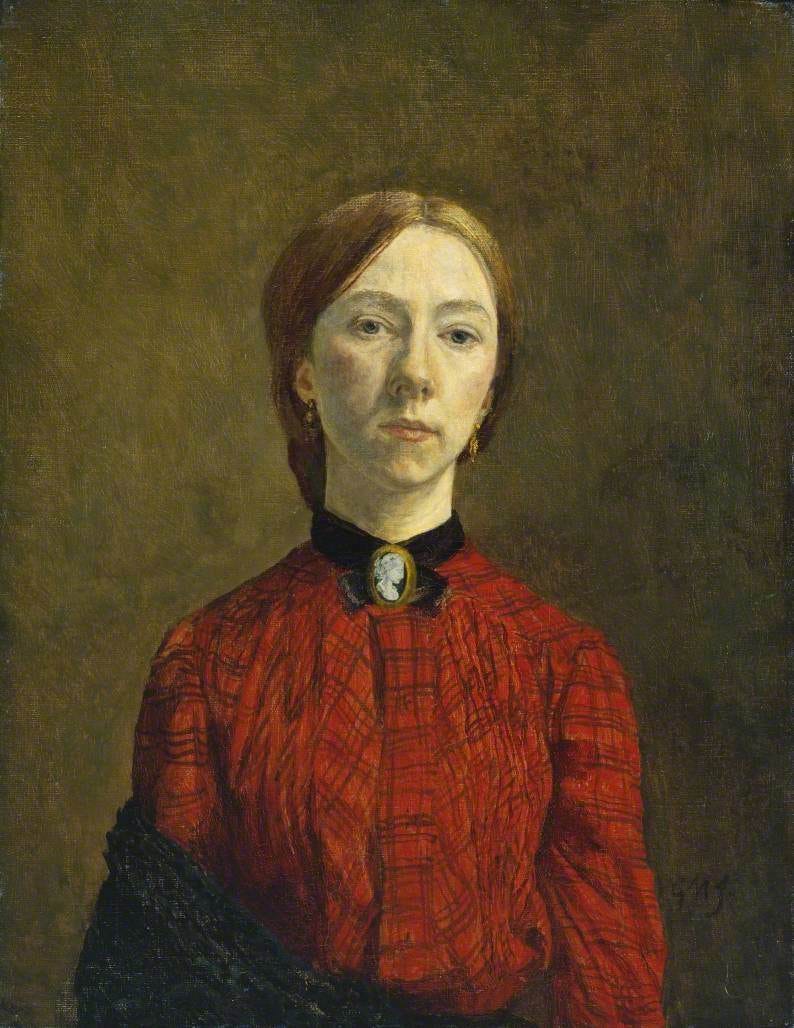
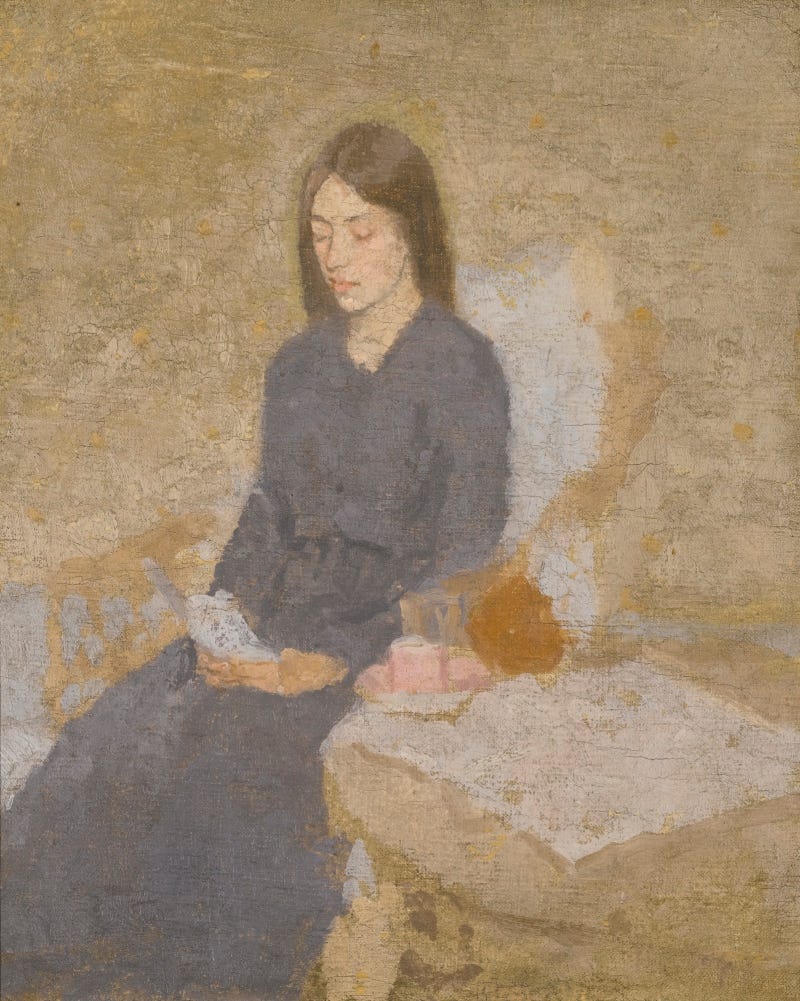
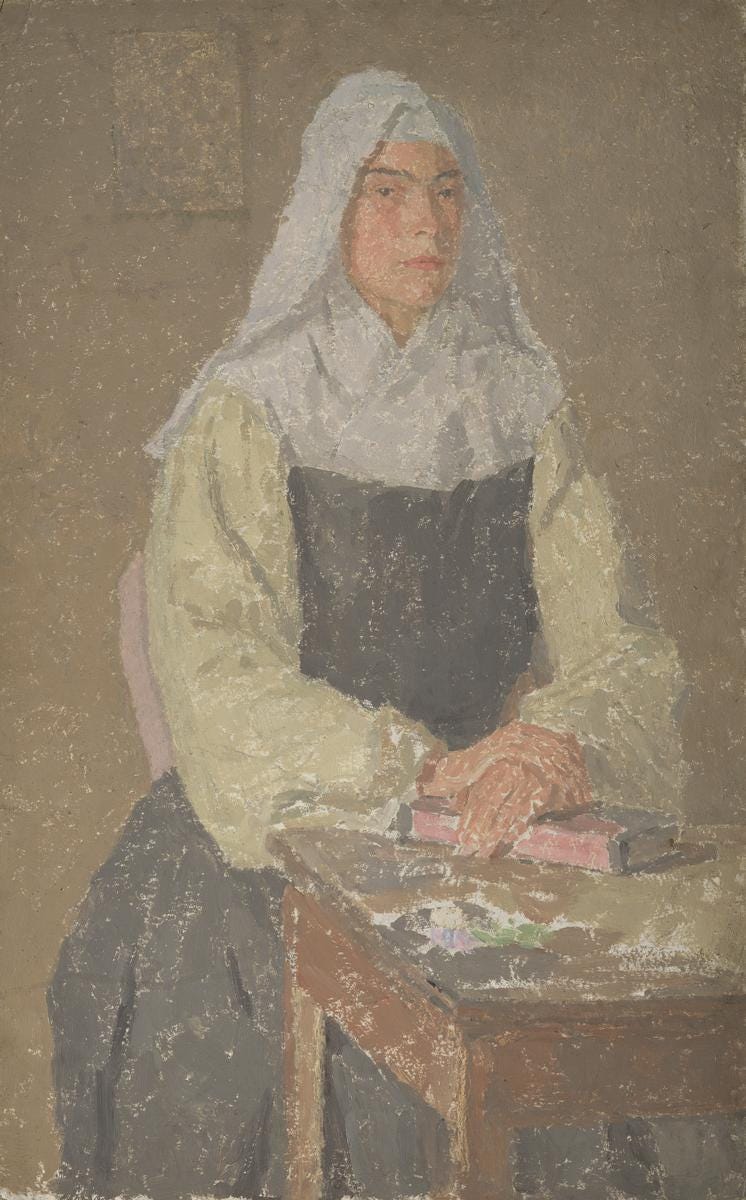
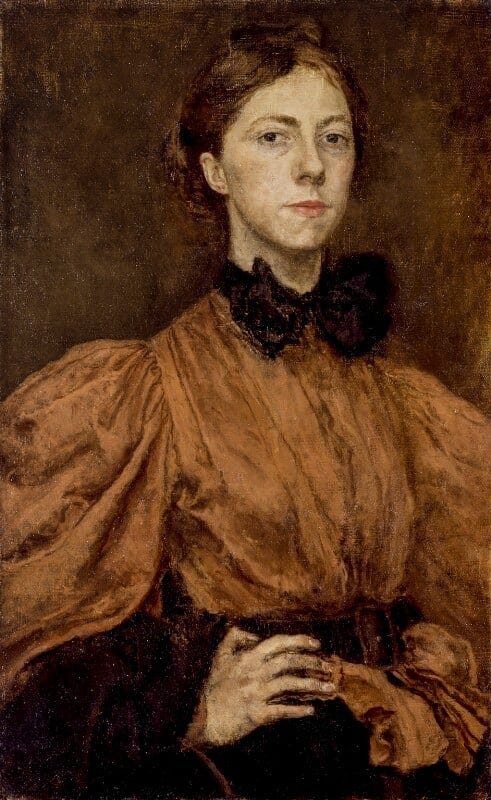
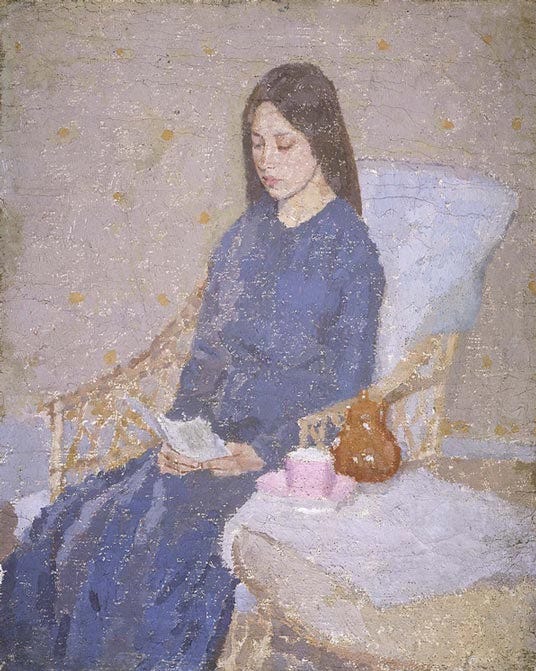
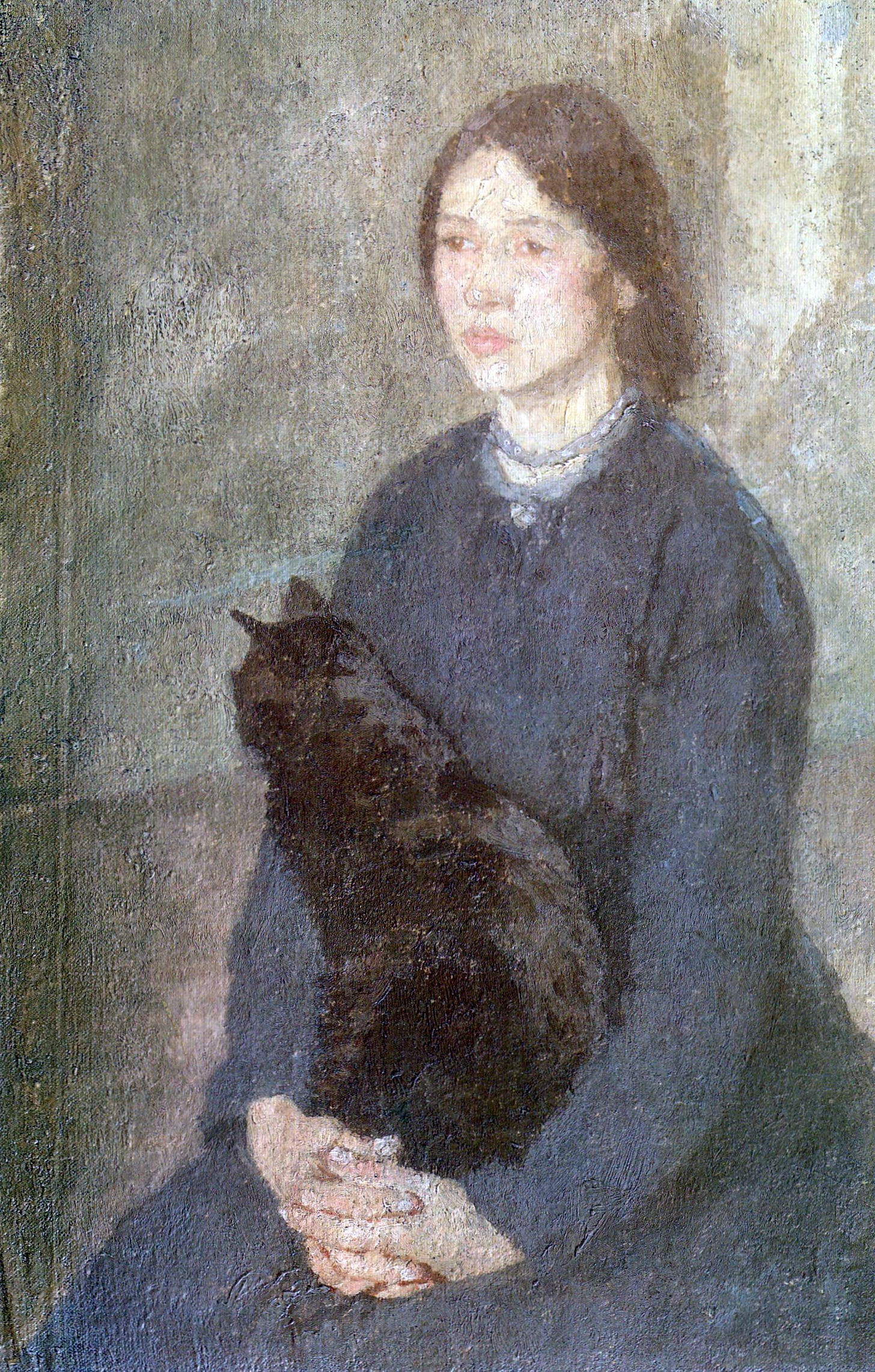
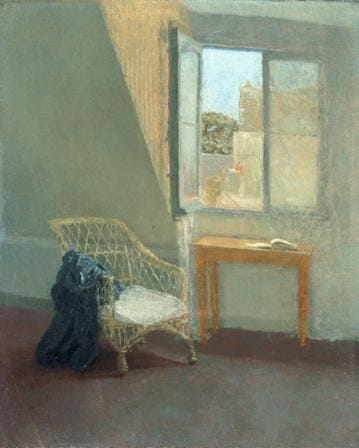
Haha it was bound to happen at some point! Thank you so much also for being so supportive and wonderful 💕
What an absolutely lovely and sensitive essay. Looking forward to learning more about this artist.
Sadly, although there is still enormous stigma and silence around the topic, here in the hard-driving atmosphere of Washington DC, there are several people I know sidelined by #LongCovid and for some the shock is absolutely devastating as they have lost their most precious asset, their "legal mind" and powers of cognition. After a couple of years, they fear that they will never be "the person" (or more accurately, the "do-er") they were before and can no longer practice law at the corporate level (or in some cases, at ANY level... ) not to mention being incapable much of the time of ANY form of employment and dependent for their survival on others. It can be enormously lonely.
Anyway, sorry for the bummer of a message, but great art touches upon all human experience. Will continue to enjoy your work! M. Murphy ("Moe")